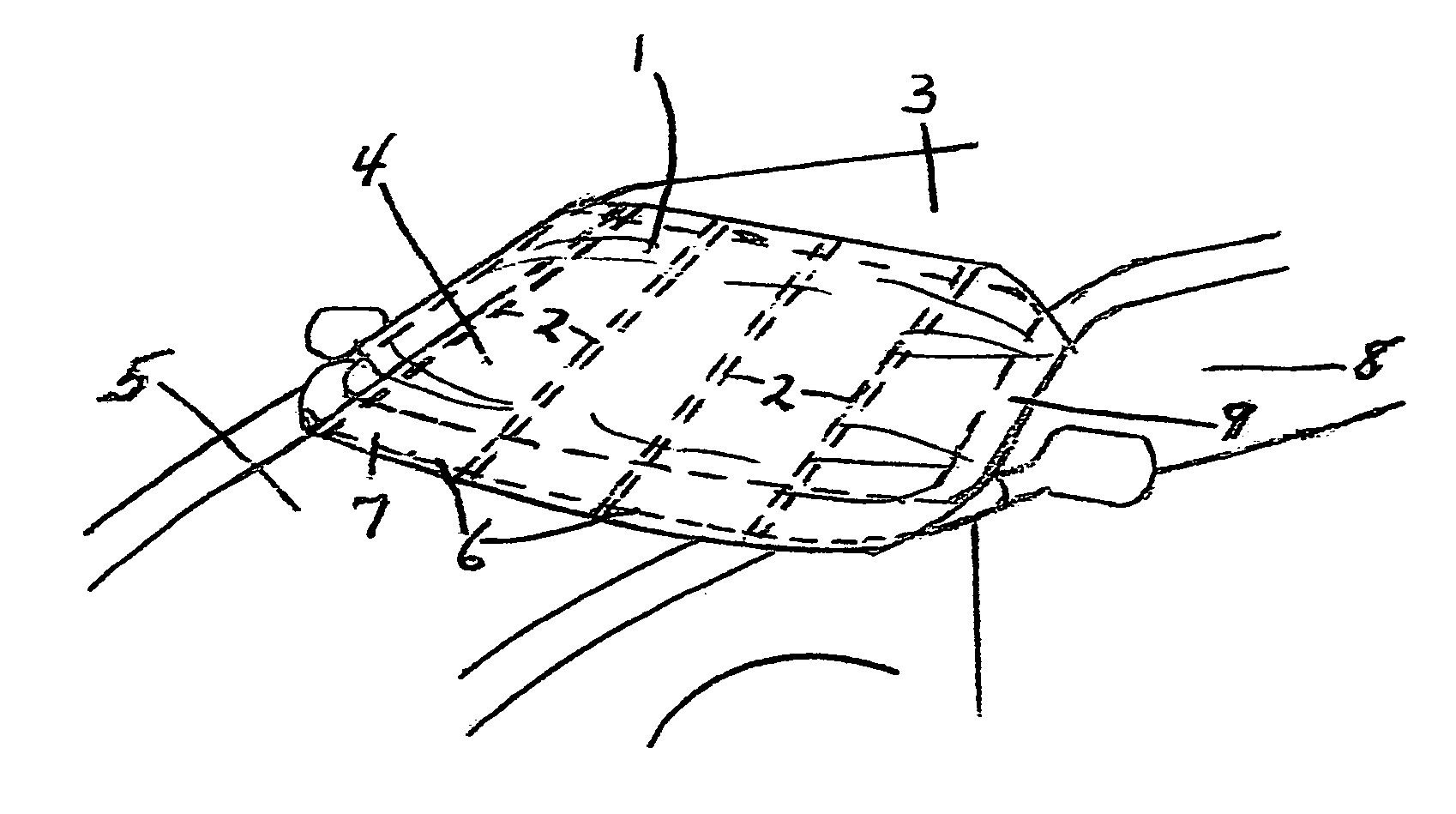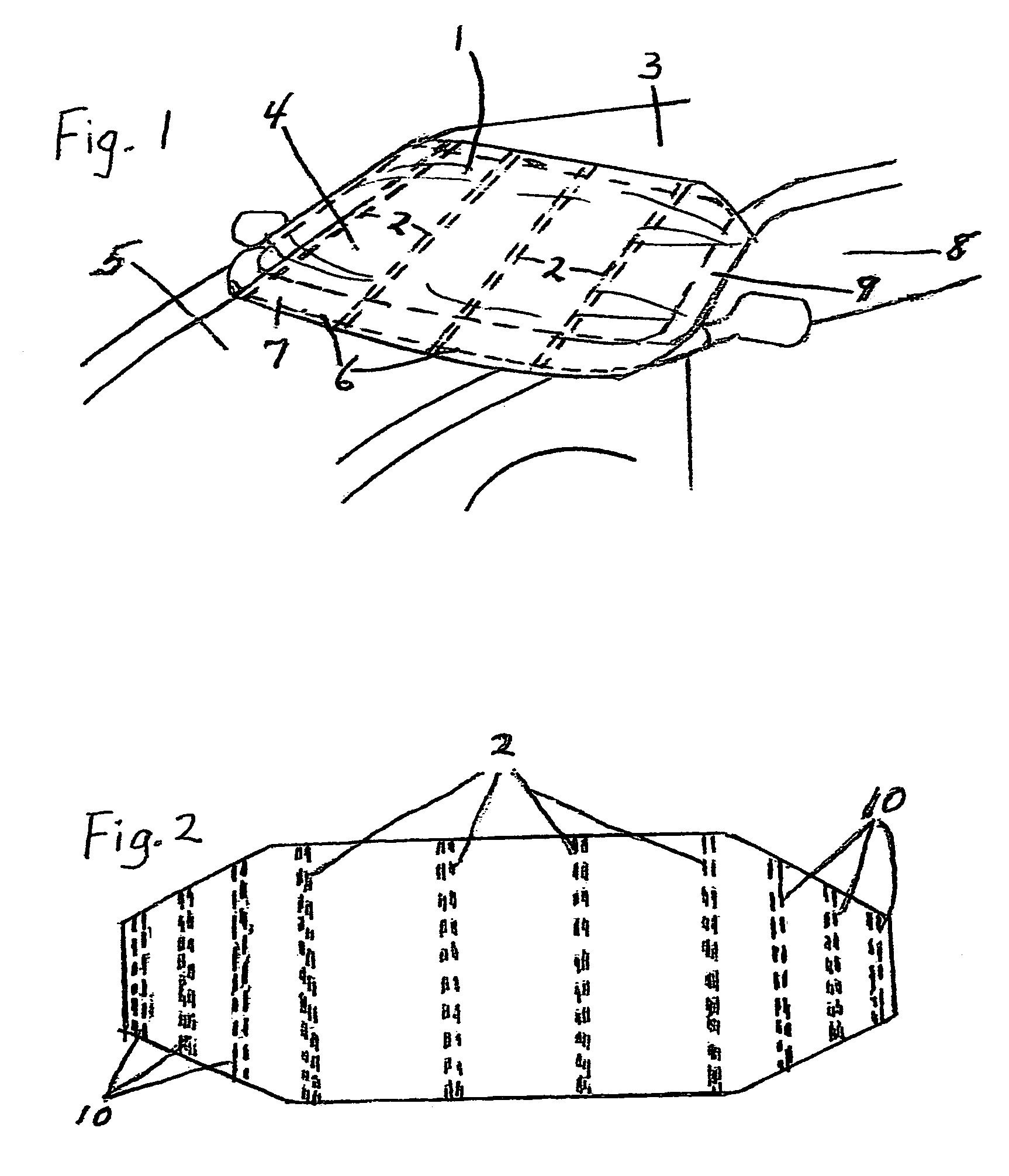Cover for windshields, windshield wipers, and air intake manifolds
a technology for windshield wipers and air intakes, applied in the direction of roofs, windows, transportation and packaging, etc., can solve the problems of user to the dangers of exhaust fumes, unnecessarily complicated, and the difficulty of handling the problem, so as to minimize the risk of slipping and falling, minimize the physical effort, and save the effect of tim
- Summary
- Abstract
- Description
- Claims
- Application Information
AI Technical Summary
Benefits of technology
Problems solved by technology
Method used
Image
Examples
Embodiment Construction
.”
BRIEF DESCRIPTION OF THE SEVERAL VIEWS OF THE DRAWINGS
[0026]FIG. 1 describes the device installed over the front windshield, windshield wipers, and air intake manifold of a vehicle, with the ends of the cover tucked between the doors and the doorframes of the vehicle.
[0027]FIG. 2 is a plan view of the cover.
[0028]FIG. 3 describes the device installed over the rear windshield, and over the rear windshield wipers, if any, of a vehicle, with the ends of the cover tucked between the doors and the doorframes of the vehicle.
DETAILED DESCRIPTION OF THE INVENTION
[0029]FIG. 1 is a front view of the cover 1 made of opaque, reflective, snow-and-ice-repellent material such as, but not limited to, plastic or plastic-coated sheeting, which can be of any color desired. The cover 1 has a plurality of rigid supporting rods 2 attached to the cover (to the underside in the case of FIG. 1), designed to span the space from the roof 3 of the vehicle (above the windshield 4, hidden beneath the cover 1) ...
PUM
 Login to View More
Login to View More Abstract
Description
Claims
Application Information
 Login to View More
Login to View More - R&D
- Intellectual Property
- Life Sciences
- Materials
- Tech Scout
- Unparalleled Data Quality
- Higher Quality Content
- 60% Fewer Hallucinations
Browse by: Latest US Patents, China's latest patents, Technical Efficacy Thesaurus, Application Domain, Technology Topic, Popular Technical Reports.
© 2025 PatSnap. All rights reserved.Legal|Privacy policy|Modern Slavery Act Transparency Statement|Sitemap|About US| Contact US: help@patsnap.com



